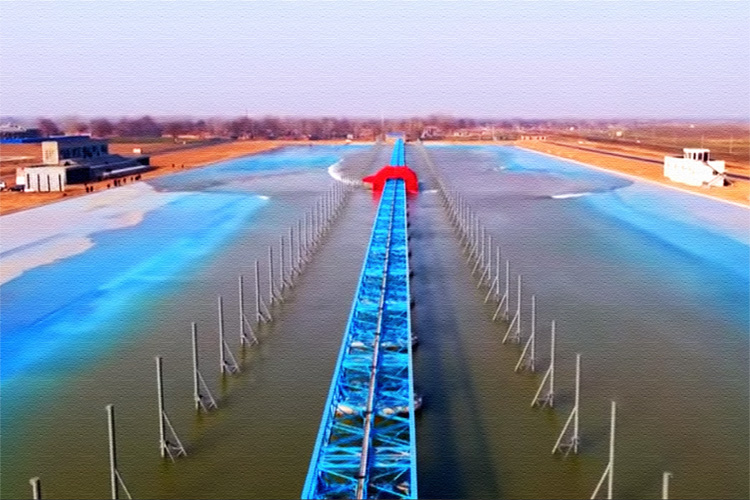Yes, it's official: There is nothing the Chinese can't do, make or imitate. China has unveiled its first wave pool.
A new video posted this week revealed a giant man-made wave lagoon producing left and right-hand rollers in Anyang, a landlocked city located in the Henan province.
With a population of five million people, Anyang is 370 miles (600 kilometers) away from the Yellow Sea.
The technology used to produce the Chinese artificial waves is similar to Kelly Slater's Surf Ranch and Wavegarden.
It uses a central freight train that runs across the middle of the pool, creating two twin waves.
The moving mechanism seems to be built with repurposed construction cranes, and rumors suggest an investment of $4 million.
China's involvement in professional surfing has been discreet and cautious but has been steadily increasing in the past decade.
There are already events sanctioned by the World Surf League (WSL) held in Chinese territory, and the number of participants is growing fast.
In It To Win It
In 2017, SurferToday published a portrait of surfing in China, which revealed that there were already signs of change and evolution.
The truth is that the so-called Western World tends to despise the financial, technological, and brain power of the Eastern World. Until countries like China get their hands on something, they wish to control or dominate.
The surprisingly functional Chinese surfing pool was announced to the world 545 days before Tokyo 2020 debuts surfing in the Olympic Games. So, in a way, it's clear what China's intentions are.
But the Anyang wave pool is just the tip of the iceberg.
We should expect to see Chinese pro surfers competing at the highest level and fighting for world titles in the next couple of decades.
Sooner or later, the state-of-the-art wave pool - capable of producing 10-foot barreling waves - will come out of China and, without tarps covering its rocket science trains, will conquer the world.
